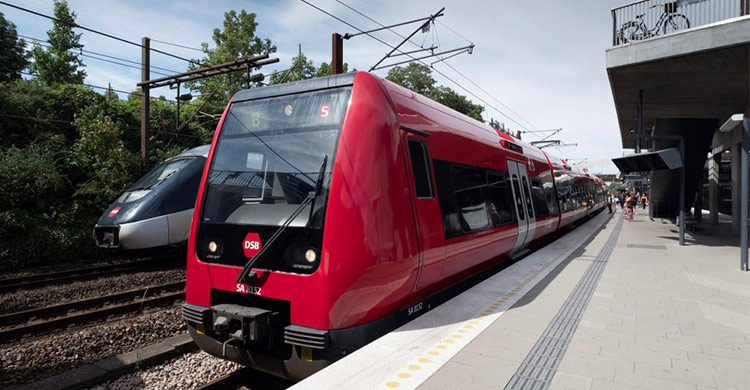Siemens Mobility is upgrading the entire 170km long S-bane network in Denmark’s capital Copenhagen to the highest grade of automation (GoA4 technology) to enable unattended train operations starting with the first phase in 2030.
Siemens claims this will make the new S-bane the world’s largest automatic urban railway. Respective contracts have been signed with Banedanmark (BDK) and DSB recently including the necessary signalling equipment for trains and wayside. GoA4 will allow the operator to run more trains in the entire system, enhance the level of passenger experience, secure the current punctuality rate and will futureproof the network.
The new contracts have a total volume of around €270 million and build on the original contract from 2011 to equip the Copenhagen S-train network with the Communications-Based Train Control System (CBTC). “We are very proud to continue and enhance our successful collaboration with Banedanmark and DSB to position the thriving city of Copenhagen as a model for modern rail infrastructure among European capitals,” said Michael Peter, CEO of Siemens Mobility. “By implementing our best-in-class signalling technology by 2033, trains will be capable of operating automatically and driverless. This will make the new S-bane the world’s largest automatic urban railway.”
The CBTC GoA4 technology upgrade will be carried out in five phases with very limited downtimes of the operation, ensuring that train services in Copenhagen are not interrupted. The first phase will cover the F-Line between stations Kobenhavn Syd and Hellerup, with the trial run scheduled for mid-2030 leading to the start of passenger operations by the end of 2030. Throughout this phased approach, a mix of existing GoA2 trains and new driverless GoA4 trains will operate until 2038.
By then, the last new driverless GoA4 train will be delivered and supported by hybrid wayside technology capable of accommodating both GoA2 and GoA4. “This comes not only via higher frequency for increased capacity and improved train services during off-peak operations, but also faster recovery from disturbances and better possibilities to adapt the traffic services to the demand on short term.”
Peter Jonasson, director of construction at Banedanmark, added, “The S-bane’s core network has the capacity to handle up to 84 trains per hour, transporting over 100 million passengers annually across a total of 88 stations on seven lines.











